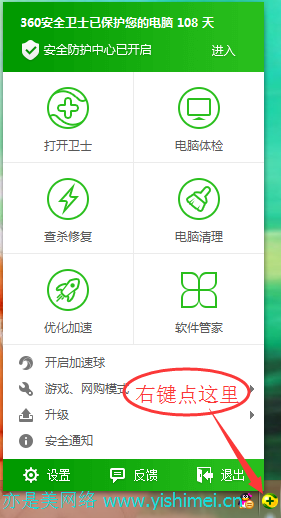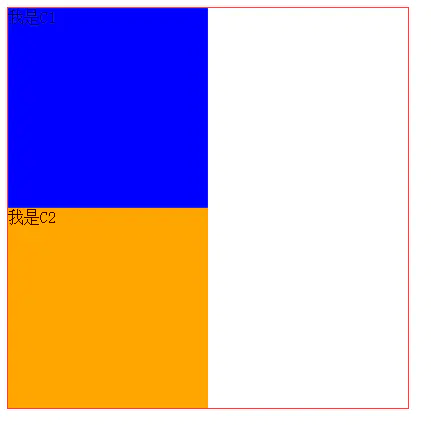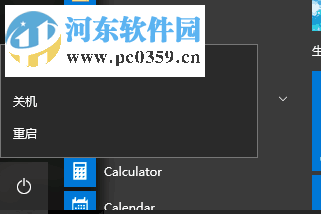Dubbo中Netty使用形式源码解读
先从Provider的角度讲,后从Consumer的角度讲,最后合起来讲共同和不同点。
每一个Dubbo接口作为Provider时,都会对外暴露Invoker,执行Export方法:
public class DubboProtocol extends AbstractProtocol {public <T> Exporter<T> export(Invoker<T> invoker) throws RpcException {URL url = invoker.getUrl();// 创建 DubboExporter 对象,并添加到 `exporterMap` 。// export service.String key = serviceKey(url);DubboExporter<T> exporter = new DubboExporter<T>(invoker, key, exporterMap);exporterMap.put(key, exporter);......// 启动服务器openServer(url);// 初始化序列化优化器optimizeSerialization(url);return exporter;}/** * 启动通信服务器 * * @param url URL */private void openServer(URL url) {// find server, ip:portString key = url.getAddress();//client 也可以暴露一个只有server可以调用的服务。//client can export a service which's only for server to invokeboolean isServer = url.getParameter(Constants.IS_SERVER_KEY, true); // isserverif (isServer) {ExchangeServer server = serverMap.get(key);if (server == null) {serverMap.put(key, createServer(url));} else {// server supports reset, use together with overrideserver.reset(url);}}}}
在此期间需要实例化Server,多个不同的Provider,如果端口相同,那么会共用一个Server(NettyServer),也就是只实例化一次。
public class NettyServer extends AbstractServer implements Server {@Overrideprotected void doOpen() {// 设置日志工厂NettyHelper.setNettyLoggerFactory();// 实例化 ServerBootstrapbootstrap = new ServerBootstrap();// 创建线程组bossGroup = new NioEventLoopGroup(1, new DefaultThreadFactory("NettyServerBoss", true));workerGroup = new NioEventLoopGroup(getUrl().getPositiveParameter(Constants.IO_THREADS_KEY, Constants.DEFAULT_IO_THREADS),new DefaultThreadFactory("NettyServerWorker", true));// 创建 NettyServerHandler 对象final NettyServerHandler nettyServerHandler = new NettyServerHandler(getUrl(), this);// 设置 `channels` 属性channels = nettyServerHandler.getChannels();bootstrap// 设置它的线程组.group(bossGroup, workerGroup)// 设置 Channel类型.channel(NioServerSocketChannel.class) // Server// 设置可选项.childOption(ChannelOption.TCP_NODELAY, Boolean.TRUE).childOption(ChannelOption.SO_REUSEADDR, Boolean.TRUE).childOption(ChannelOption.ALLOCATOR, PooledByteBufAllocator.DEFAULT)// 设置Handler链路.childHandler(new ChannelInitializer<NioSocketChannel>() {@Overrideprotected void initChannel(NioSocketChannel ch) {// 创建 NettyCodecAdapter 对象NettyCodecAdapter adapter = new NettyCodecAdapter(getCodec(), getUrl(), NettyServer.this);ch.pipeline()//.addLast("logging",new LoggingHandler(LogLevel.INFO))//for debug.addLast("decoder", adapter.getDecoder()) // 解码.addLast("encoder", adapter.getEncoder()) // 编码.addLast("handler", nettyServerHandler); // 处理器}});// 服务器绑定端口监听// bindChannelFuture channelFuture = bootstrap.bind(getBindAddress());channelFuture.syncUninterruptibly();channel = channelFuture.channel();}}
Netty的Reactor模型和ChannelPipeline模型网上很多,这里就不列举了。
上述代码实例化Netty的Reactor模型相关的对象,默认使用NioSocketChannel(Selector)作为数据传输通道,按顺序依次添加日志,解码,编码,业务处理的Handler。
Provider的Server在接收到Consumer(Client)的请求数据后,先通过解码Handler进行以下处理:
- 首先通过Dubbo协议的数据格式来对TCP/IP数据进行拆包
- 将拆包得到的数据进行反序列化,比如Hession,Json,Thrift,ProtoBuf等,得到Java DTO
- 将DTO以及Invoker的相关信息封装为一个Task,投递到执行线程池中,最终调用Dubbo接口
- 将业务结果通过序列化工具序列化为可传输的字节数组,然后根据传输协议(Dubbo)组装成相应的数据格式,写入Channel
1.数据拆包及获取传输的Body:

public class ExchangeCodec extends TelnetCodec {// header length.protected static final int HEADER_LENGTH = 16;// magic header.protected static final short MAGIC = (short) 0xdabb;protected static final byte MAGIC_HIGH = Bytes.short2bytes(MAGIC)[0];protected static final byte MAGIC_LOW = Bytes.short2bytes(MAGIC)[1];public Object decode(Channel channel, ChannelBuffer buffer) throws IOException {// 读取 Header 数组,Header长度为16字节int readable = buffer.readableBytes();byte[] header = new byte[Math.min(readable, HEADER_LENGTH)];buffer.readBytes(header);// 解码return decode(channel, buffer, readable, header);}/** * @param channel * @param buffer * @param readable 可读取长度 * @param header 数据头部 * @return * @throws IOException */@Overrideprotected Object decode(Channel channel, ChannelBuffer buffer, int readable, byte[] header) throws IOException {// 非 Dubbo 协议,目前是 Telnet 命令。// 通过MAGIC判断请求数据是否为Dubbo协议if (readable > 0 && header[0] != MAGIC_HIGH || readable > 1 && header[1] != MAGIC_LOW) {// 将 buffer 完全复制到 `header` 数组中。因为,上面的 `#decode(channel, buffer)` 方法,可能未读全int length = header.length;if (header.length < readable) {header = Bytes.copyOf(header, readable);buffer.readBytes(header, length, readable - length);}// 【TODO 8026 】header[i] == MAGIC_HIGH && header[i + 1] == MAGIC_LOW ?for (int i = 1; i < header.length - 1; i++) {if (header[i] == MAGIC_HIGH && header[i + 1] == MAGIC_LOW) {buffer.readerIndex(buffer.readerIndex() - header.length + i);header = Bytes.copyOf(header, i);break;}}// 提交给父类( Telnet ) 处理,目前是 Telnet 命令。return super.decode(channel, buffer, readable, header);}// Header 长度不够,返回需要更多的输入// check length.if (readable < HEADER_LENGTH) {return DecodeResult.NEED_MORE_INPUT;}// `[96 - 127]`:Body 的**长度**。通过该长度,读取 Body 。// get data length.int len = Bytes.bytes2int(header, 12);checkPayload(channel, len);// 总长度不够,返回需要更多的输入int tt = len + HEADER_LENGTH;if (readable < tt) {return DecodeResult.NEED_MORE_INPUT;}// 解析 Header + Body// limit input stream.ChannelBufferInputStream is = new ChannelBufferInputStream(buffer, len);try {return decodeBody(channel, is, header);} finally {// skip 未读完的流,并打印错误日志if (is.available() > 0) {try {if (logger.isWarnEnabled()) {logger.warn("Skip input stream " + is.available());}StreamUtils.skipUnusedStream(is);} catch (IOException e) {logger.warn(e.getMessage(), e);}}}}}
每次请求的数据都严格按照指定协议组装,Header+Body。Header16个字节长度,通过Header的数据结构来判断Channel里读取的数据是不是一次请求的完整数据。如果不够,那么返回,等待此Channel的下次数据读取;如果够了,那么将ByteBufer里指定Body长度的数据提交给序列化器反序列化为Java DTO。
2.将Body反序列化为Java DTO:
public class ExchangeCodec extends TelnetCodec {/** * 解析,返回 Request 或 Response * * @param channel 通道 * @param is 输出 * @param header Header * @return 结果 * @throws IOException 当发生 IO 异常时 */protected Object decodeBody(Channel channel, InputStream is, byte[] header) throws IOException {byte flag = header[2], proto = (byte) (flag & SERIALIZATION_MASK);Serialization s = CodecSupport.getSerialization(channel.getUrl(), proto);ObjectInput in = s.deserialize(channel.getUrl(), is);// Response// get request id.long id = Bytes.bytes2long(header, 4);if ((flag & FLAG_REQUEST) == 0) { // Response// decode response.Response res = new Response(id);if ((flag & FLAG_EVENT) != 0) {res.setEvent(Response.HEARTBEAT_EVENT);}// get status.byte status = header[3];res.setStatus(status);if (status == Response.OK) {try {Object data;if (res.isHeartbeat()) {data = decodeHeartbeatData(channel, in);} else if (res.isEvent()) {data = decodeEventData(channel, in);} else {data = decodeResponseData(channel, in, getRequestData(id)); // `#getRequestData(id)` 的调用,是多余的}res.setResult(data);} catch (Throwable t) {res.setStatus(Response.CLIENT_ERROR);res.setErrorMessage(StringUtils.toString(t));}} else {res.setErrorMessage(in.readUTF());}return res;// Request} else { // Request// decode request.Request req = new Request(id);req.setVersion("2.0.0");req.setTwoWay((flag & FLAG_TWOWAY) != 0);if ((flag & FLAG_EVENT) != 0) { // 心跳事件req.setEvent(Request.HEARTBEAT_EVENT);}try {Object data;if (req.isHeartbeat()) {data = decodeHeartbeatData(channel, in);} else if (req.isEvent()) {data = decodeEventData(channel, in);} else {data = decodeRequestData(channel, in);}req.setData(data);} catch (Throwable t) {// bad requestreq.setBroken(true);req.setData(t);}return req;}}}
根据Header里的第三个字节来判断当前数据是请求还是响应(因为Server和Client共用一套数据处理流程),实例化响应的Request,Response对象,将Header的第四个字节Status存入返回对象中,将第4-12个字节组成的RequestId存入返回对象,将Body数据通过反序列化得到的DTO存入返回对象。RequestId是一次请求的唯一标识,Client通过此标识来将Server返回的数据映射到之前发送的请求上。
3.对于Server,异步形式处理请求数据
public class AllChannelHandler extends WrappedChannelHandler {public void received(Channel channel, Object message) throws RemotingException {ExecutorService cexecutor = getExecutorService();try {cexecutor.execute(new ChannelEventRunnable(channel, handler, ChannelState.RECEIVED, message));} catch (Throwable t) {......}}}
4.调用Dubbo接口,将请求结果反序列化,然后按照协议格式组装数据写入Channel:
调用Dubbo接口的代码在 DubboProtocol#requestHandler里,代码很容易看明白,这里就不列举了
编码的Handler执行顺序在业务Handler写入数据之后,其会请求结果序列化,然后按照协议格式数据
public class ExchangeCodec extends TelnetCodec {public void encode(Channel channel, ChannelBuffer buffer, Object msg) throws IOException {if (msg instanceof Request) { // 请求encodeRequest(channel, buffer, (Request) msg);} else if (msg instanceof Response) { // 响应encodeResponse(channel, buffer, (Response) msg);} else { // 提交给父类( Telnet ) 处理,目前是 Telnet 命令的结果。super.encode(channel, buffer, msg);}}/** * 编码响应 * * @param channel 通道 * @param buffer Buffer * @param res 响应 * @throws IOException 当发生 IO 异常时 */protected void encodeResponse(Channel channel, ChannelBuffer buffer, Response res) throws IOException {int savedWriteIndex = buffer.writerIndex();try {Serialization serialization = getSerialization(channel);// `[0, 15]`:Magic Number// 构建Headerbyte[] header = new byte[HEADER_LENGTH];// set magic number.Bytes.short2bytes(MAGIC, header);// `[16, 20]`:Serialization 编号 && `[23]`:响应。// set request and serialization flag.header[2] = serialization.getContentTypeId();// `[21]`:`event` 是否为事件。if (res.isHeartbeat()) header[2] |= FLAG_EVENT;// `[24 - 31]`:`status` 状态。// set response status.byte status = res.getStatus();header[3] = status;// `[32 - 95]`:`id` 编号,Long 型。// set request id.Bytes.long2bytes(res.getId(), header, 4);// 编码 `Request.data` 到 Body ,并写入到 Bufferbuffer.writerIndex(savedWriteIndex + HEADER_LENGTH);ChannelBufferOutputStream bos = new ChannelBufferOutputStream(buffer); // 序列化 OutputObjectOutput out = serialization.serialize(channel.getUrl(), bos);// encode response data or error message.if (status == Response.OK) {if (res.isHeartbeat()) {encodeHeartbeatData(channel, out, res.getResult());} else {encodeResponseData(channel, out, res.getResult());}} else {out.writeUTF(res.getErrorMessage());}// 释放资源out.flushBuffer();if (out instanceof Cleanable) {((Cleanable) out).cleanup();}bos.flush();bos.close();// 检查 Body 长度,是否超过消息上限。int len = bos.writtenBytes();checkPayload(channel, len);// `[96 - 127]`:Body 的**长度**。Bytes.int2bytes(len, header, 12);// 写入 Header 到 Buffer// writebuffer.writerIndex(savedWriteIndex);buffer.writeBytes(header); // write header.buffer.writerIndex(savedWriteIndex + HEADER_LENGTH + len);} catch (Throwable t) {......}}}
在Provider端的Netty的作用流程基本就如上述所示,下面将Consumer端相对于Provider端不同的作用流程。
每个接口的Consumer在初始化时都会实例化一个NettyClient,也就是实例化一个Netty的Bootstrap。如果按照传统思路,每个Bootstrap关联一个EventLoopGroup,内部持有一个Selector,那么每个接口Consumer实例都会有一个Selector,这会造成资源的很大浪费,所以Dubbp定义了一个EventLoopGroup类型的常量,让所有Consumer在实例化时都用同一个EventLoopGroup,也就是一个Selector处理所有的Consumer的Channel:
public class NettyClient extends AbstractClient {private static final NioEventLoopGroup nioEventLoopGroup = new NioEventLoopGroup(Constants.DEFAULT_IO_THREADS, new DefaultThreadFactory("NettyClientWorker", true));protected void doOpen() {// 设置日志工厂NettyHelper.setNettyLoggerFactory();// 创建 NettyClientHandler 对象final NettyClientHandler nettyClientHandler = new NettyClientHandler(getUrl(), this);// 实例化 ServerBootstrapbootstrap = new Bootstrap();bootstrap// 设置它的线程组.group(nioEventLoopGroup)// 设置可选项.option(ChannelOption.SO_KEEPALIVE, true).option(ChannelOption.TCP_NODELAY, true).option(ChannelOption.ALLOCATOR, PooledByteBufAllocator.DEFAULT)//.option(ChannelOption.CONNECT_TIMEOUT_MILLIS, getTimeout())// 设置 Channel类型.channel(NioSocketChannel.class);// 设置连接超时时间if (getTimeout() < 3000) {bootstrap.option(ChannelOption.CONNECT_TIMEOUT_MILLIS, 3000);} else {bootstrap.option(ChannelOption.CONNECT_TIMEOUT_MILLIS, getTimeout());}// 设置责Handler链路bootstrap.handler(new ChannelInitializer() {@Overrideprotected void initChannel(Channel ch) {// 创建 NettyCodecAdapter 对象NettyCodecAdapter adapter = new NettyCodecAdapter(getCodec(), getUrl(), NettyClient.this);ch.pipeline()//.addLast("logging",new LoggingHandler(LogLevel.INFO))//for debug.addLast("decoder", adapter.getDecoder()) // 解码.addLast("encoder", adapter.getEncoder()) // 编码.addLast("handler", nettyClientHandler); // 处理器}});}}
Consumer相比于Provider还有一点不同:
Provider会使用线程池异步的处理Consumer发送的请求,处理完成后将相应数据写入Channel;
Consumer在大部分情况下都是发送同步请求,也就是会阻塞当前线程,直到Provider返回数据,或者阻塞超时。
public class DubboInvoker<T> extends AbstractInvoker<T> {protected Result doInvoke(final Invocation invocation) {RpcInvocation inv = (RpcInvocation) invocation;// 获得方法名final String methodName = RpcUtils.getMethodName(invocation);// 获得 `path`( 服务名 ),`version`inv.setAttachment(Constants.PATH_KEY, getUrl().getPath());inv.setAttachment(Constants.VERSION_KEY, version);// 获得 ExchangeClient 对象ExchangeClient currentClient;if (clients.length == 1) {currentClient = clients[0];} else {currentClient = clients[index.getAndIncrement() % clients.length];}// 远程调用try {// 获得是否异步调用boolean isAsync = RpcUtils.isAsync(getUrl(), invocation);// 获得是否单向调用boolean isOneway = RpcUtils.isOneway(getUrl(), invocation);// 获得超时时间int timeout = getUrl().getMethodParameter(methodName, Constants.TIMEOUT_KEY, Constants.DEFAULT_TIMEOUT);// 单向调用if (isOneway) {boolean isSent = getUrl().getMethodParameter(methodName, Constants.SENT_KEY, false);currentClient.send(inv, isSent);RpcContext.getContext().setFuture(null);return new RpcResult();// 异步调用} else if (isAsync) {ResponseFuture future = currentClient.request(inv, timeout);RpcContext.getContext().setFuture(new FutureAdapter<Object>(future));return new RpcResult();// 同步调用} else {RpcContext.getContext().setFuture(null);return (Result) currentClient.request(inv, timeout).get();}} catch (TimeoutException e) {throw new RpcException(RpcException.TIMEOUT_EXCEPTION, "Invoke remote method timeout. method: " + invocation.getMethodName() + ", provider: " + getUrl() + ", cause: " + e.getMessage(), e);} catch (RemotingException e) {throw new RpcException(RpcException.NETWORK_EXCEPTION, "Failed to invoke remote method: " + invocation.getMethodName() + ", provider: " + getUrl() + ", cause: " + e.getMessage(), e);}}}
如果是同步调用的情况下,会将调用相关信息存入一个DefaultFuture中,然后阻塞,等待Provider返回信息,依据requestId来唤醒当前线程:
public class DefaultFuture implements ResponseFuture {/** * 通道集合 * * key:请求编号 */private static final Map<Long, Channel> CHANNELS = new ConcurrentHashMap<Long, Channel>();/** * Future 集合 * * key:请求编号 */private static final Map<Long, DefaultFuture> FUTURES = new ConcurrentHashMap<Long, DefaultFuture>();public DefaultFuture(Channel channel, Request request, int timeout) {this.channel = channel;this.request = request;this.id = request.getId();this.timeout = timeout > 0 ? timeout : channel.getUrl().getPositiveParameter(Constants.TIMEOUT_KEY, Constants.DEFAULT_TIMEOUT);// put into waiting map.FUTURES.put(id, this);CHANNELS.put(id, channel);}/** * 阻塞式的等待结果 * * @param timeout * @return * @throws RemotingException */public Object get(int timeout) throws RemotingException {if (timeout <= 0) {timeout = Constants.DEFAULT_TIMEOUT;}// 若未完成,等待if (!isDone()) {long start = System.currentTimeMillis();lock.lock();try {// 等待完成或超时while (!isDone()) {done.await(timeout, TimeUnit.MILLISECONDS);if (isDone() || System.currentTimeMillis() - start > timeout) {break;}}} catch (InterruptedException e) {throw new RuntimeException(e);} finally {lock.unlock();}// 未完成,抛出超时异常 TimeoutExceptionif (!isDone()) {throw new TimeoutException(sent > 0, channel, getTimeoutMessage(false));}}// 返回响应return returnFromResponse();}}
Consumer解析处Provider传递回来的数据,每解析成功一个返回结果,如果此次请求时同步请求,就会通过Condition唤醒相应requestId的请求线程,此时同步请求才会有结果返回。
/** * 完成 Condition */private final Condition done = lock.newCondition();/** * 接收响应( Response ) * * @param channel 通道 * @param response 响应 */public static void received(Channel channel, Response response) {try {// 移除 FUTURESDefaultFuture future = FUTURES.remove(response.getId());// 接收结果if (future != null) {future.doReceived(response);} else {logger.warn("The timeout response finally returned at "+ (new SimpleDateFormat("yyyy-MM-dd HH:mm:ss.SSS").format(new Date()))+ ", response " + response+ (channel == null ? "" : ", channel: " + channel.getLocalAddress()+ " -> " + channel.getRemoteAddress()));}// 移除 CHANNELS} finally {CHANNELS.remove(response.getId());}}private void doReceived(Response res) {// 锁定lock.lock();try {// 设置结果response = res;// 通知,唤醒等待if (done != null) {done.signal();}} finally {// 释放锁定lock.unlock();}// 调用回调if (callback != null) {invokeCallback(callback);}}
Consumer的拆包,序列化,协议格式数据组装都和Provider都是相同的,每次请求都会有一个唯一标识requestId来匹配请求和响应。请求在Provider端使用线程池异步执行,在Consumer端可同步,异步,Oneway形式,如果是同步则阻塞线程,等待指定requestId的响应返回来唤醒线程。

































还没有评论,来说两句吧...